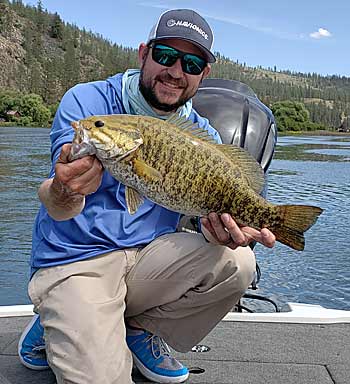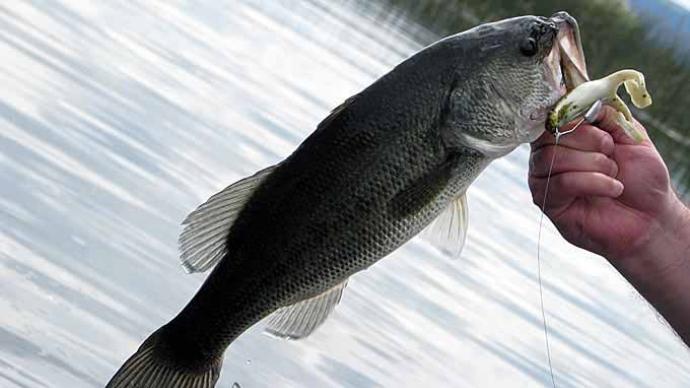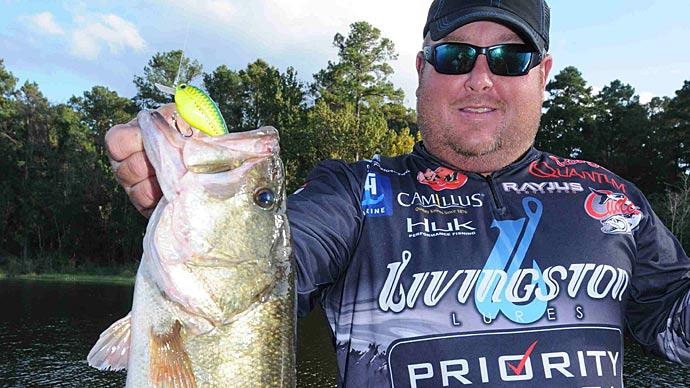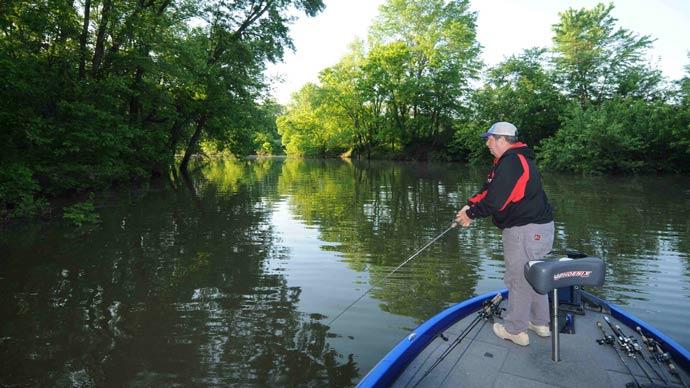
Fishing river systems provide a unique fishing experience that significantly changes from targeting bass in the still waters of ponds, lakes, and reservoirs. A river's flowing waters provide new fishing opportunities and must be approached differently. But following a few fundamental principles can make fishing rivers easier and more predictable. Bass in moving water utilize current to their advantage, and anglers who understand how to use it can increase their success when tackling rivers.
Catch a Break
In general, bass don't like current, but those in river systems are forced to adapt and use it to their advantage. The smallmouth is more willing to live in current, but largemouth prefer as little current as possible. Both species will seek out current when they need to, mainly to feed, and the rest of the time, they will be doing their best to avoid it.
Objects in the water provide bass with breaks from the current, and these current breaks can be made of many different things. Standard items are rocks, laydowns, points, channel swings in the river, and manmade structures like walls, concrete, and docks. Each will give the bass a place to hide and stay out of the current while still being close enough to race out and grab food passing them by.
Navigational Buoys
The nautical term "red, right, return" refers to keeping the buoys on your port (right) side when returning upstream, but these buoys also often mark great fishing locations. In addition, the river channels are often marked with the danger of shallow rocks, flats, and other objects; they often tell of good structure that also serves as a current break.
As a good practice, anglers in the know explore areas around buoys as they can lead to some excellent fishing, especially for main river smallmouth bass during the summer and fall.
Boat Positioning
One of the biggest keys is casting angle when fishing in current, whether from shore or a boat. Fish who live in rivers constantly look upstream for food to flow by them and help them position in the current to evade predators and stay safe. So it's a good idea always to cast upstream and work your lures back towards you to get the fish's attention in a way that they are used to looking for their next meal.
Positioning the boat right into the current requires more work and trolling motor power to stay in place, but it's smarter as the boat will remain in the correct position and will not slide to either side as it flows with the current, like when you are floating downstream.

Casting upstream also helps reduce snagging your lures as it is much easier to move up towards the hung bait than flowing downstream to get unhung and get yourself out of position for the next cast. Also, the way most rocks and other items on the river bottom are positioned over time, generally at an angle away from the current, hang-ups are much more frequent when working a bait upriver.
Eddies and Current Seams
One unique aspect of fishing rivers is the ability to read the current from above the surface. How the river flows can give anglers great clues about where the bass should be located. These include eddies and current seams.
Eddies are unique in that the river flows backward in a section after hitting an obstruction under the surface. It's an unusual phenomenon, and the water looks calm at times, making it an excellent place for bass to sit and position themselves without fighting the current. It also makes it much easier to keep your boat in the same place for making repeated casts.
Current seams are similar in that an object in the river changes the river's flow and creates faster and slower currents in one area. These are also high percentage areas for locating bass.
Target the Backwaters
In river systems, all bass, panfish, and largemouth especially will seek out backwater areas that are out of the current and provide an environment without current. These areas act as miniature lakes or ponds, have their ecosystems out of the current, and allow the bass to live without fighting the strongest current. Since they are still connected to the river, bass can move in and out of the backwaters. They may make moves depending on the season and if they need to eat.

Finding backwater areas can be done with the help of electronic mapping and Google Earth, and they can provide some excellent river fishing. Bass use these areas heavily in the spring months to spawn, and depending on the depth, they could spend their entire existence in these areas if there is enough forage to survive.
River Fishing Lures
Fishing river systems don't require specific tackle, but some lures are better suited for fishing in current. These include moving baits such as spinnerbaits, ChatterBaits, crankbaits, swimbaits, and topwaters. These baits are excellent for fishing rivers because they can be fished quickly in the current and get the attention of river bass.
Other popular lure choices are soft plastics like tubes, creature baits, drop-shot rigs, and jigs. However, depending on the current speed, most slow-falling baits like weightless stick worms and wacky rigs will not be the best options for fishing rivers.
Fishing river systems require a different approach than fishing lakes, but they can provide excellent bass fishing, as bass will generally be grouped into areas. You can find these high-percentage areas with keen observation and a general understanding of how rivers work.




